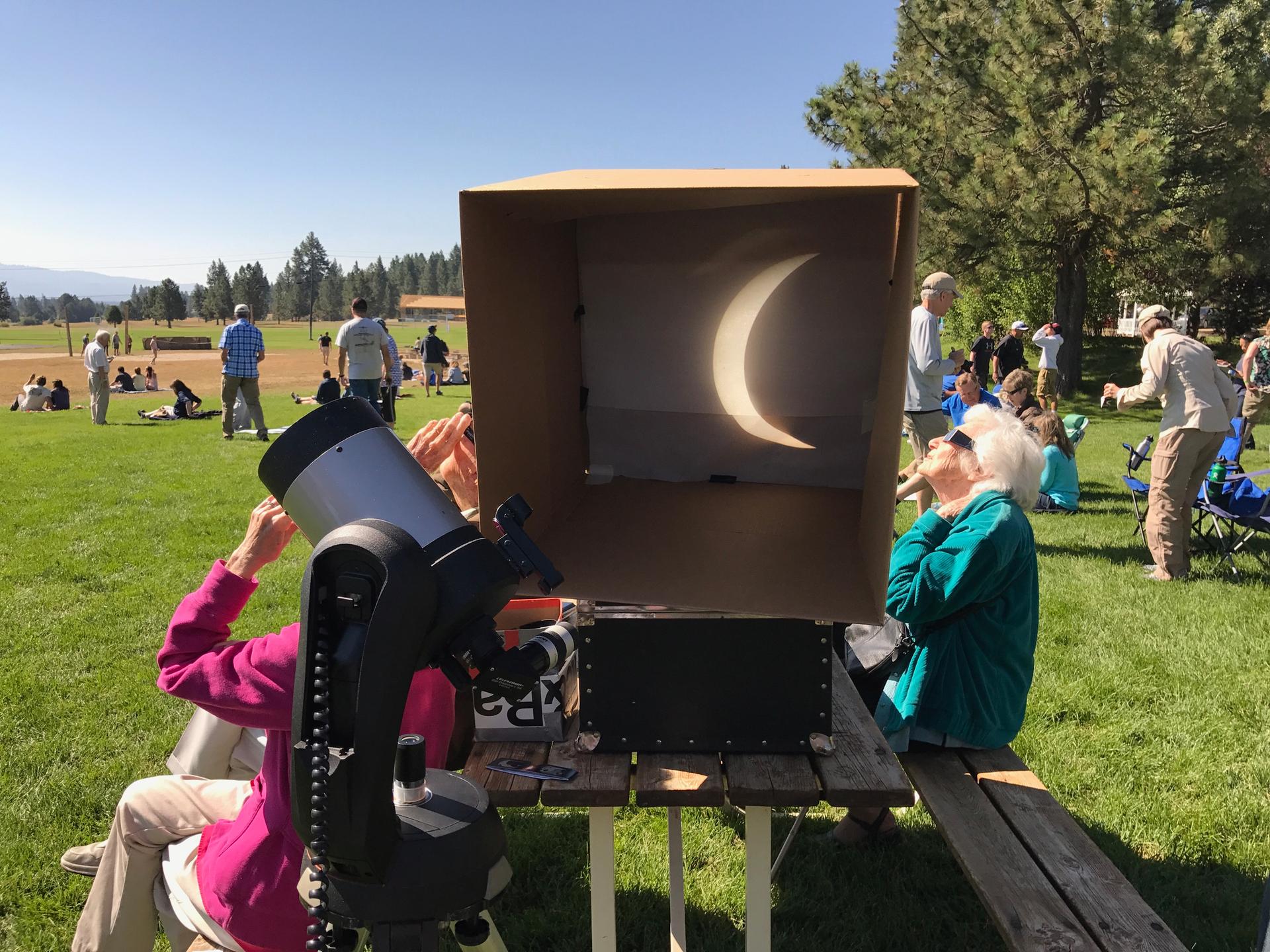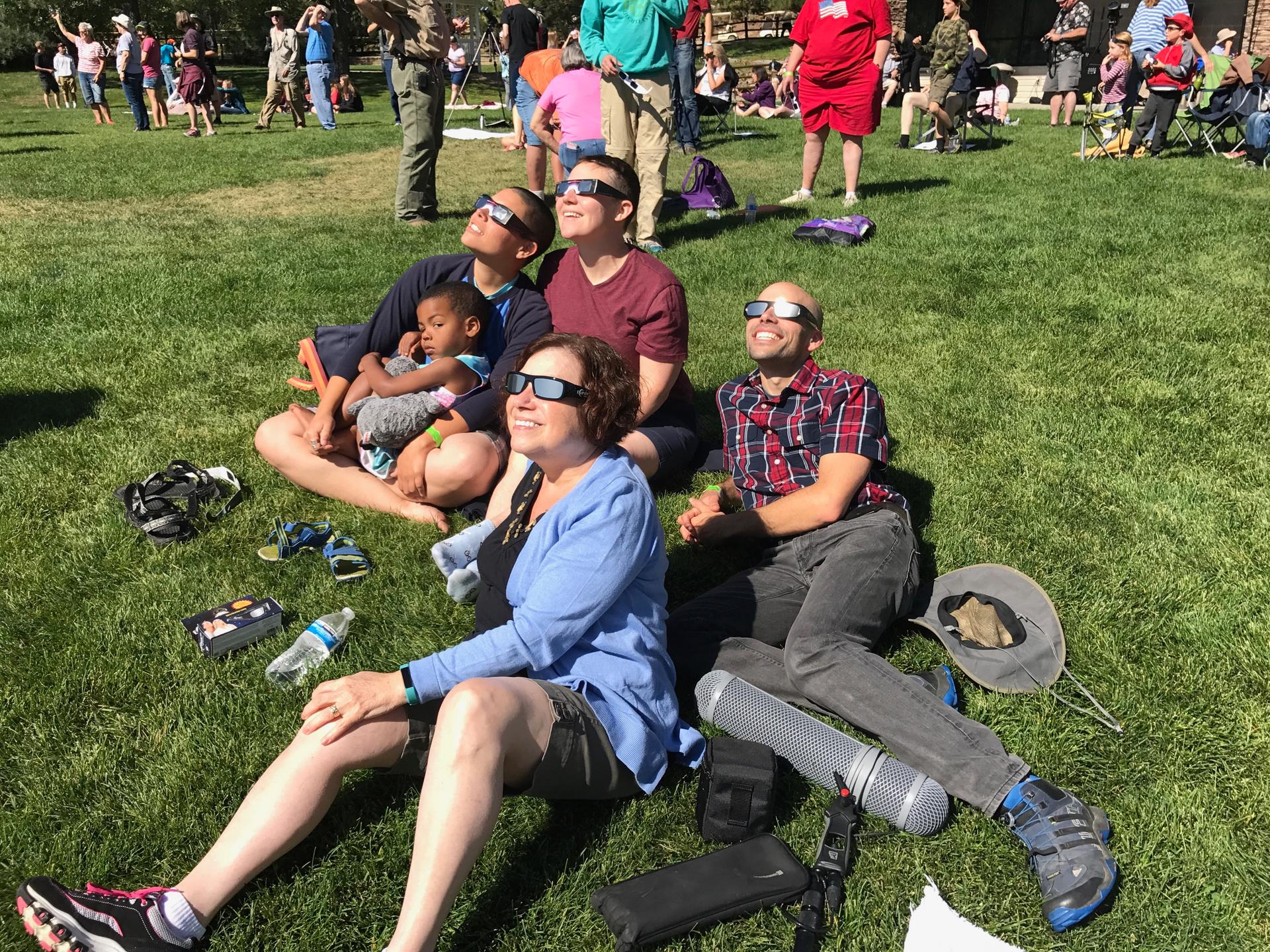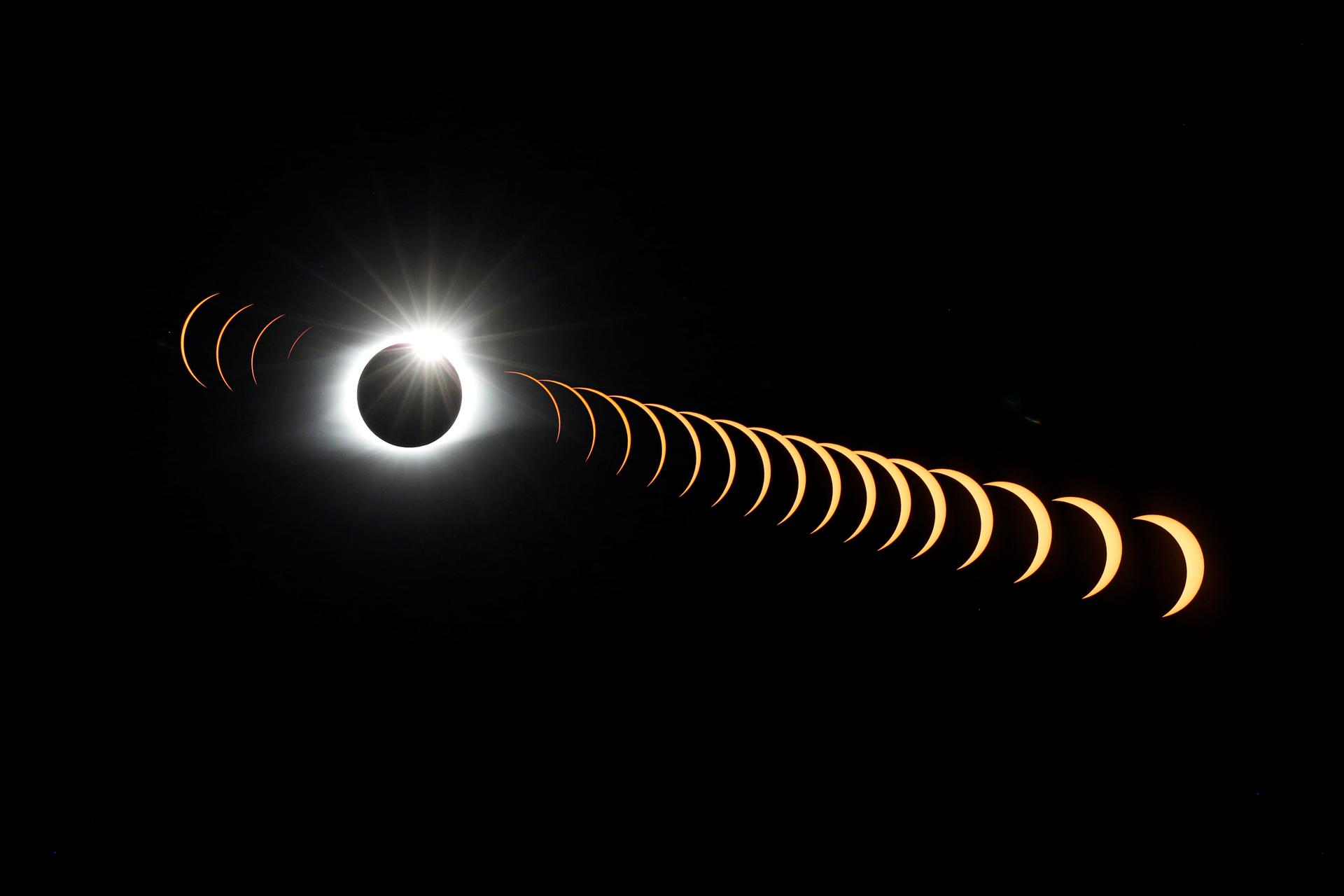A multiple-exposure image shows the solar eclipse as it creates the effect of a diamond ring at totality as seen from Clingmans Dome, which at 6,643 feet is the highest point in Great Smoky Mountains National Park, Tennessee, August 21, 2017.
Whoops, cheers and cries of astonishment swept across the country today as the first total solar eclipse in nearly 40 years was seen from the United States.
“That was the most extraordinary experience. I was flabbergasted,” said John Llewellyn of Boise, who watched the eclipse in Cascade, Idaho.
“We always assume the sun is going to be shining, and suddenly the sun is gone. … I can understand how the ancients thought that it had been eaten by a great space monster.”
Eclipse chasers and amateur star watchers alike converged in cities along the path of totality, a 70-mile wide swath cutting through 14 US states.
Festivals, rooftop parties, weddings, camping trips and astronomy meet-ups popped up nationwide for what NASA expected to be the most heavily photographed and documented eclipse in modern times.
Llewellyn watched the eclipse in Cascade, with a few hundred people gathered at a viewing event organized by Northwest Nazarene University.
Ari Daniel, NOVA digital producer and frequent contributor to The World, was also there.
“I was totally unprepared, and I’ve been reporting on this for the past couple of months,” Daniel said.

“There is nothing that comes close to being able to see this glowing ring of light in the sky. … It was breathtakingly beautiful.”
Daniel reported no traffic jams and perfect visibility for the celestial event in Cascade.
He describes the suspense that mounted during the countdown to totality, when the moon would completely cover the sun.
“When it was announced that we could take the eclipse glasses off there was a cry from the crowd that went up when we looked into the sky — everyone was very excited,” Daniel said.
Emotional sky-gazers stood transfixed across the country during the first eclipse to sweep the continent coast-to-coast in nearly a century.
Oregon was the first US state to experience the total eclipse just after 1:15 ET. It lasted for roughly 90 minutes, ending in Charleston, South Carolina.

“It brings into focus our infinitesimally small place in the universe,” said Sandra Cuneo from Los Angeles. “For just two minutes, you forget perhaps the quotidian life and see for a moment the infinite universe.”
A life-long dream fulfilled
For one woman, watching Monday’s eclipse fulfilled a lifelong dream.
Kathy Shrout had been waiting for the eclipse for more than 50 years, after learning about it as a 10-year-old girl in Kentucky.
Despite anticipation that’s been building for decades, Shrout said the eclipse exceeded her expectations.
“It was magnificent. I’ve never seen anything like it in my life,” said Shrout, who watched the eclipse with her family in Sweetwater, Tennessee.
Shrout spotted the so-called “diamond ring” effect, crescent-shaped shadows on the ground, and “Bailey’s beads,” bright spots of light protruding from valleys in the moon.
What struck her the most, however, were the Earth-bound effects of the eclipse: midday darkness, crickets chirping and the awestruck silence of a huge crowd.
“You could have heard a pin drop, it was so quiet in this crowd of people,” Shrout said. “It was beautiful.”
Now that this eclipse is over, Shrout is marking her calendar for the next US eclipse on April 8, 2024.
“It just makes me want to go see the next one,” Shrout said. “I’ve already got the date memorized.”
Agence France-Presse contributed to this story.
